
The Boeing 737 is a short- to medium-range twinjet narrow-body airliner developed and manufactured by Boeing Commercial Airplanes in the United States.
Originally developed as a shorter, lower-cost twin-engine airliner derived from the 707 and 727, the 737 has developed into a family of thirteen passenger models with capacities from 85 to 215 passengers.
The 737 is Boeing’s only narrow-body airliner in production, with the 737 Next Generation (-700, -800, and -900ER) and the re-engined and updated 737 MAX variants currently being built.
It’s the most-produced airliner in the world, and these are 13 impressive facts about it.
1) First Flight
The 737’s maiden flight was on April 9, 1967 – more than two years before the first moon landing.
Envisioned in 1964, the initial 737-100 made its first flight in April 1967 and entered service in February 1968 with Lufthansa.
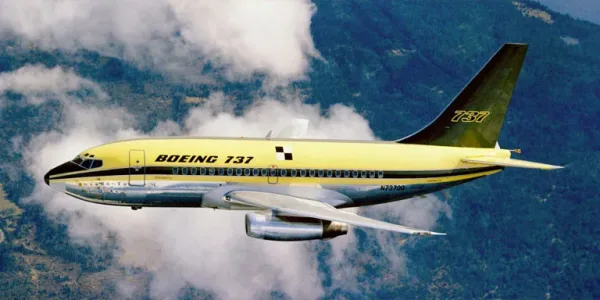
2) The best-selling airliner
The 737 is the best-selling airliner in history, with over 8,500 built.
Boeing 737 went on to become the highest-selling commercial aircraft until surpassed by the competing Airbus A320 family in October 2019 but maintains the record in total deliveries.
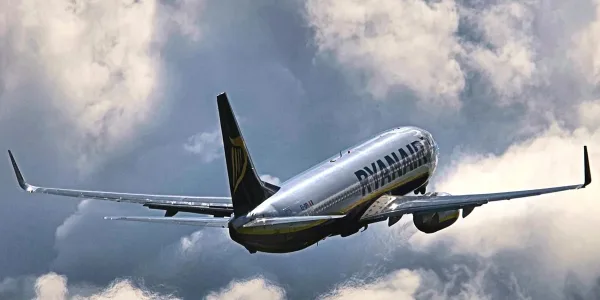
3) Airborne
In 2006, over 4,500 Boeing 737s were operated by more than 500 airlines, flying to 1,200 destinations in 190 countries.
And on average 1,250 aircraft were airborne, with two either departing or landing every five seconds.
The 737 was the most commonly flown aircraft in 2008, 2009, and 2010.
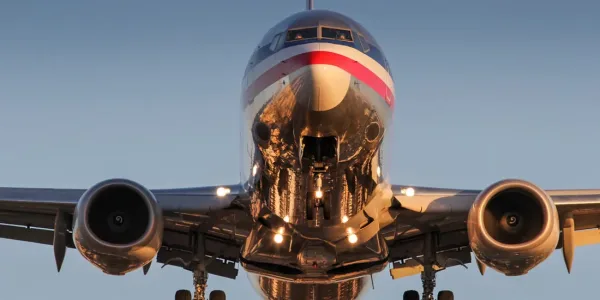
4) Launching
A launch customer for the 737 wasn’t in the US. It was German-based Lufthansa Airlines.
This launch decision for the $150 million development was made by the board on February 1, 1965.
Lufthansa became the launch customer on February 19, 1965, with an order for 21 aircraft, worth $67 million after the airline had been assured by Boeing that the 737 projects would not be canceled.
Consultation with Lufthansa over the previous winter had resulted in the seating capacity is increased to 100.

5) Consider Cancellation
They considered canceling the program, but after the cancellation of the Boeing Supersonic Transport, and scaling back of the 747.
Sales were low in the early 1970s and, after a peak of 114 deliveries in 1969, only 22 737s were shipped in 1972 with 19 in the backlog.
The US Air Force saved the program by ordering T-43s, which were modified Boeing 737-200s.
African airline orders kept the production running until the 1978 US Airline Deregulation Act, which improved demand for six-abreast narrow-body aircraft.
Demand further increased after being re-engined with the CFM56.
They freed enough funds to keep the program going.
The 737 went on to become the highest-selling commercial aircraft until surpassed by the competing Airbus A320 family in October 2019 but maintains the record in total deliveries.
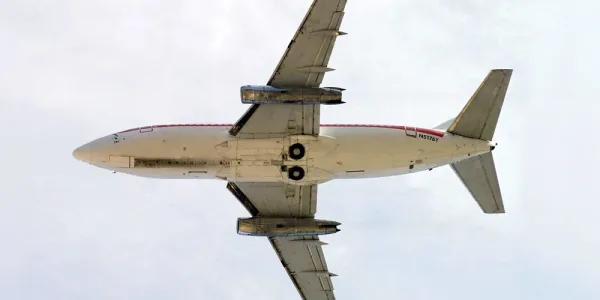
6) The Gravel Kit
The 737-200 had an optional gravel kit.
The improved short-field capabilities of Boeing offered the option of the gravel kit modification features preventing foreign object damage.
This enables this aircraft to operate on remote, unimproved, or unpaved runways, such as gravel runways, that other similarly sized jetliners cannot.

7) Turbofan Engines
The 737-300 featured CFM high-bypass turbofan engines.
However, the gear design provided very little ground clearance for the new engines.
To overcome the problem, engineers reduced the size of the fan, placed the engines ahead of the wings, and moved the engine accessories to the sides of the engine.
This gave it a non-circular shape, as well as more ground clearance.
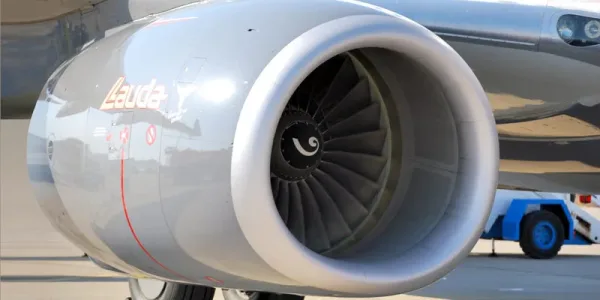
8) Cooperation with CFM
The engine design saved CFM’s program – up until then, CFM had not sold any CFM56 engines.
Cooperation with CFM International to select, modify and deploy a new engine and nacelle that would make the 737-300 a viable aircraft.
They chose the CFM56-3B-1 high-bypass turbofan engine to power the aircraft, which yielded significant gains in fuel economy and a reduction in noise.
But also posed an engineering challenge, given the low ground clearance of the 737 and the larger diameter of the engine over the original Pratt & Whitney engines.

9) Gear Doors
The 737 doesn’t have gear doors.
Instead, the wheels have hub caps on the outside, and the gear wells have brushes on them to create an aerodynamic seal.
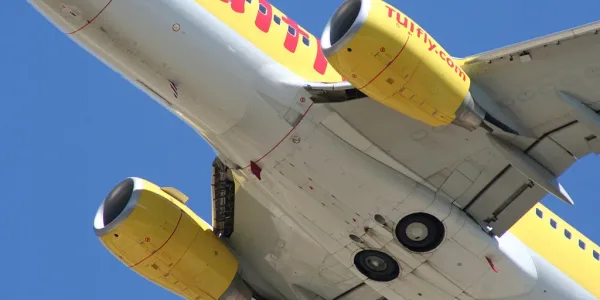
10) Eyebrow Windows
Many of the early 737 models had eyebrow windows, giving pilots better visibility in turns, and making star navigation easier.
Early 737 cockpits also inherited the “eyebrow windows” positioned above the main glare shield.
Which were a feature of the original 707 and 727 to allow for better crew visibility.
The eyebrow windows were sometimes removed and plugged, usually during maintenance overhauls.
And can be distinguished by the metal plug which differs from the smooth metal in later aircraft that were not originally fitted with the windows.
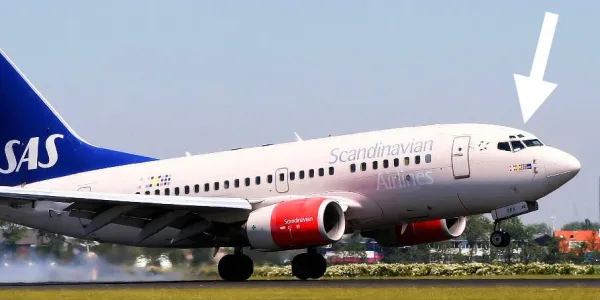
11) Split Scimitar winglets
In 2014, airlines started installing Split Scimitar winglets on 737s (for the 737-800, 737-900ER, BBJ2, and BBJ3, and in 2015 for the 737-700, 737-900, and BBJ1.).
Which increases fuel savings by 2.2%, And as an added bonus, the wings look even cooler.
Split Scimitar winglets were developed by Aviation Partners
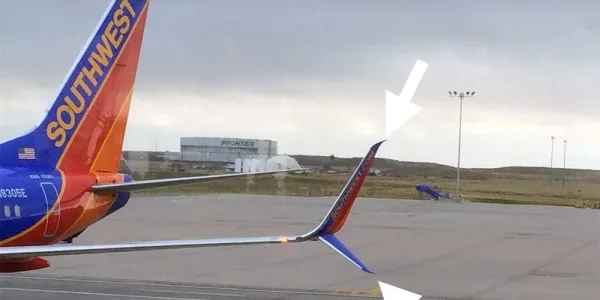
12) Large Fleet
On average, a 737 takes off or lands somewhere on Earth every 5 seconds.
In 2013, over 5,580 Boeing 737s were operated by more than 342 airlines in 111 countries, which represented more than 25% of the worldwide fleet of large jet airliners.
737 airplane had carried 16.8 billion passengers (twice of 7.1 billion world population in that time) over 119 billion miles (192 billion km) with more than 184 million flights or 264 million hours in the air.
In 2016, there were 6,512 Boeing 737 airliners in service (5,567 737NGs plus 945 737-200s and 737 Classics), more than the 6,510 Airbus A320 family.
While in 2017, there were 6,858 737s in service (5,968 737NGs plus 890 737-200s and classics), fewer than the 6,965 A320 families.
As of June 2021, despite being the world’s most delivered airliner, 9,315 Boeing 737s were in service, slightly fewer than the 9,353 A320 families, as more 737s were already out of service.

13) Technical Specs
| 737-700 | 737-800 | 737-900 | |
| Seats (2-class) | 126 | 162 | 178 |
| Maximum seats | 149 | 189 | 220 |
| Length | 33.6 m (110 ft 4 in) | 39.5 m (129 ft 6 in) | 42.1 m (138 ft 2 in) |
| Wingspan | 35.8 m (117 ft 5 in) | 35.8 m (117 ft 5 in) | 35.8 m (117 ft 5 in) |
| Height | 12.5 m (41 ft 3 in) | 12.5 m (41 ft 3 in) | 12.5 m (41 ft 3 in) |
| Engine | CFM-56 | CFM-56 | CFM-56 |
Boeing 737 max Family
| 737 MAX 7 | 737 MAX 8 | 737 MAX 9 | 737 MAX 10 | |
|---|---|---|---|---|
| Seats (2-class) | 138 – 153 | 162 – 178 | 178 – 193 | 188 – 204 |
| Maximum seats | 172 | 210 | 220 | 230 |
| Range nm (km) | 3,850 (7,130) | 3,550 (6,570) | 3,550 (6,570)* | 3,300 (6,110)* |
| Length | 35.56 m (116 ft 8 in) | 39.52 m (129 ft 8 in) | 42.16 m (138 ft 4 in) | 43.8 m (143 ft 8 in) |
| Wingspan | 35.9 m (117 ft 10 in) | 35.9 m (117 ft 10 in) | 35.9 m (117 ft 10 in) | 35.9 m (117 ft 10 in) |
| Engine | LEAP-1B from CFM International | LEAP-1B from CFM International | LEAP-1B from CFM International | LEAP-1B from CFM International |
| 210 seats: 737-8-200 | *one auxiliary tank | *one auxiliary tank |

